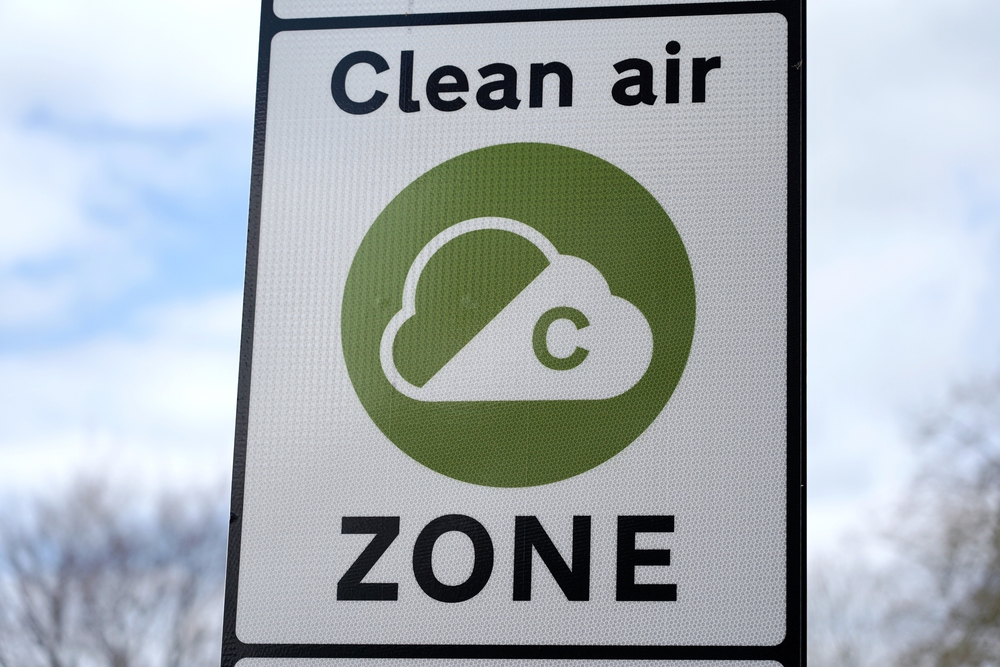
The DFS explores the impact of low emission zones (LEZs) on the continental fuel landscape in the coming years.
Also read: Lessons from ports: How to seek $3 billion in zero-emission subsidies from the US
Signs displaying the latest Low Emission Zone (LEZ) guidelines have become a common sight in Europe’s urban areas, with 320 LEZs currently in place across the continent and expected to reach 500 by 2025.
The system has been praised for improving the city’s air quality, reducing overall road traffic, and boosting the local economy.
According to the latest statistics, Italy leads the way with 172 low-emission zones established nationwide, followed by Germany with 78. Meanwhile, most countries are still in the early stages, with fewer than 20 low-emission zones each.
But will this change in the future?
Fuel supply company Dover Fueling Solutions (DFS) explores the impact and explains how Low Emission Zones (LEZs) could change the continent’s fuel supply landscape in the coming years.
Why are low emission zones important?
The 2022 Clean Cities Report cited the twin challenges of toxic air pollution and climate change as reasons for implementing low emission zones.
According to the World Health Organization (WHO), air pollution is the greatest environmental risk to health, causing 300,000 premature deaths each year in the EU alone.
Shockingly, more than 100 cities across the continent are reported to be in violation of EU air quality standards. This puts city dwellers at great risk, meaning anti-pollution measures must be taken.
The burning of fossil fuels is the main cause of air pollution, including emissions from factories, power plants and vehicles. Agriculture and its byproducts methane and ammonia are another major cause, while volcanoes, dust, pollen and wildfires are more natural factors.
It’s not just about physical health; the mental health benefits have also been proven.
Studies have shown that small increases in air pollution are associated with increased depression and anxiety in urban populations. Cleaner air has also been linked to improved intelligence and a reduced risk of dementia.
Going forward, low emission zones are expected to be replaced by zero emission zones, which have already been trialled with great success in European cities such as Milan, Paris, Brussels, Madrid and Warsaw.
What is the impact of low emission zones across Europe?
This is all well and good in principle, but do low emission zones deliver positive results in practice?
The Clean Cities Campaign states that nitrogen dioxide emissions have been reduced by around 20% on average across all low emission zones. Further results include:
London – 40%
Brussels – 33%
Paris – 24%
Lisbon – 22%
London’s (Ultra) Low Emission Zone is an interesting case study. A study from the University of Bath showed that reduced nitrogen dioxide pollution led to a 4.5% reduction in long-term health problems and an 8% reduction in respiratory illness.
Greater London alone is estimated to have saved £963 million in healthcare costs in dealing with the problem. Experts also predict that London’s ULEZ could help reduce anxiety by 6%. This could be explained by the positive effects on the nervous system from cleaner air and better conditions for physical exercise.
In the light vehicle sector, Rotterdam’s low emission zone has halved the number of polluting cars and reduced soot emissions by 20-30%.
The benefits of a Low Emission Zone (LEZ) scheme are not limited to cleaner air, but also include more stable traffic flows and less negative impact on business.
How does LEZ influence the adoption of clean fuels?
It can also be said that low emission zones are changing the face of refueling across the African continent.
In the European Commission’s long-term strategy for 2050, alternative fuel sources such as electricity, hydrogen, LNG/CNG and biofuels are outlined as cleaner alternatives to traditional liquid fuels in the transport sector.
Because these power sources avoid the use of diesel and gasoline, they can help reduce air pollution, especially in urban areas with high traffic volumes.
As a result, the penetration of electric vehicles (EVs) and EV charging infrastructure is concentrated around cities, especially those with low emission zones. For example, in areas where low emission zones are in operation (or planned), the penetration of EVs is much higher than the national average.
For example, 89% of new car registrations in Oslo were battery electric vehicles (BEV) or plug-in hybrid electric vehicles (PHEV), followed by Amsterdam (31%), London (22%) and Paris (20%).
Correlations also exist for other alternative fuels: While liquefied natural gas (LNG) filling stations tend to be located outside LEZ boundaries, the concentration of LNG filling stations is significantly higher in countries with LEZs and ULZs.
This certainly shows that low emission zones have a positive impact on the adoption of clean fuels.
Whether this means traditional city centre petrol stations will become a thing of the past remains to be seen, particularly in some countries where the sale of combustion engine vehicles is still permitted after 2030. However, one possibility is that petrol and diesel stations may be pushed further and further out of cities and along motorway infrastructure, given the rise of low emission zones.
in conclusion
The growth of low emission zones and ultra low emission zones across the continent has been a notable feature in recent years and will continue to grow in the future.
This has brought some significant benefits, including cleaner air, better physical and mental health, and less traffic congestion.
There does appear to be a positive correlation between these areas and the adoption of cleaner modes of transport, with drivers looking to combat daily charges and adopt more sustainable driving habits.
This may mean that people in urban and metropolitan areas transition faster than those in rural areas, but the long-term effects remain to be seen.











Leave a Reply Cancel reply
You must be logged in to post a comment.